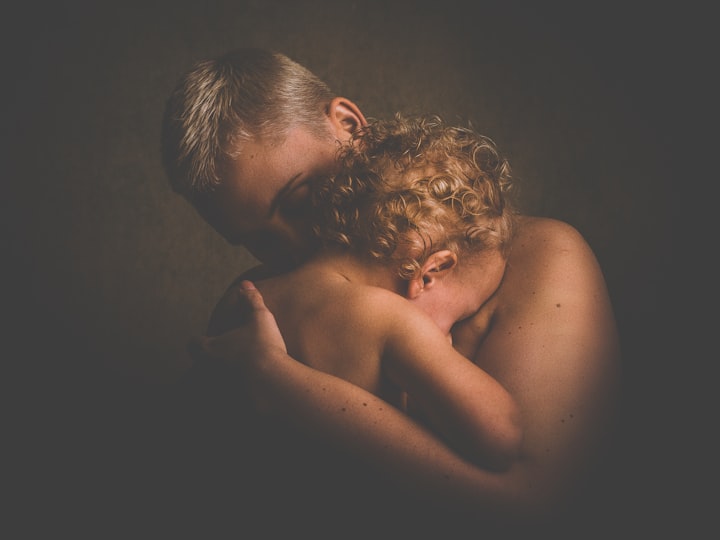The Tearful Exodus:
Stories of Climate Refugees

art writing...
In a land once lush with greenery and teeming with life, now stood a desolate wasteland. The village of Aria, nestled amidst the vast wilderness, had been a haven for generations. But as the world grappled with the wrath of climate change, this tranquil sanctuary turned into a battleground between nature's fury and the resilience of its people.
Meet Rana, a young woman with eyes that sparkled like the morning sun and a spirit as fierce as the monsoon rains. She had grown up listening to tales of her ancestors' deep bond with nature, a connection that formed the very fabric of their lives. Her mother, Nisha, would share stories of how once the rains painted the village in shades of emerald, now they brought with them only devastation.
As the once lush fields turned barren, the village elders huddled together, trying to devise ways to survive. But with each passing year, the droughts intensified, and the rivers dwindled to mere rivulets. The only solace they had was the knowledge that they were not alone in their struggles.
Across the land, communities like Aria faced similar trials. As Rana's village became a poster child for the climate crisis, more and more families were forced to leave their homes, becoming climate refugees. The tears of sorrow shed by these displaced communities painted a grim picture of the world's uncertain future.
One evening, as the sun painted the sky in hues of pink and gold, a solemn meeting was held at the village square. "We cannot stay here any longer," declared the village chief, his voice quivering with emotion. "Our only chance for survival lies beyond these borders."
Rana's heart sank. The thought of leaving the land that cradled her childhood dreams felt like a betrayal to her roots. Yet, deep down, she knew that this was the only way to preserve the essence of Aria.
The tearful exodus began at dawn. Families packed their meager belongings, the weight of their memories and hopes etched into each bag. With a heavy heart, Rana clasped her mother's hand, their fingers entwined like vines that had once adorned their homes. Nisha's eyes were brimming with tears, mirroring the sorrow of countless mothers who had bid farewell to their ancestral lands.
The journey was arduous, a true test of human resilience. They walked for days, following the faint whisper of hope, as though guided by an invisible thread of destiny. The once vibrant laughter of children now echoed as hushed whispers, a silent prayer for strength to endure.
Their first refuge was a neighboring village, whose compassionate embrace warmed the weary travelers' souls. Rana saw faces etched with stories of loss and survival, a testament to the shared struggle they now endured. The tears of sorrow soon mingled with tears of unity, as they found strength in one another.
Yet, even in this newfound sanctuary, the fear of uncertainty gnawed at their hearts. Would this new land be able to sustain them? Could they ever truly call it home?
As the seasons passed, Rana's village adapted to their new surroundings. They worked tirelessly to rebuild their lives, nurturing the seedlings of hope amidst the barren soil. Together, they found innovative ways to conserve water and harness renewable energy. Slowly, the land began to respond, offering a glimmer of promise.
In this journey of displacement, Rana discovered her voice. She became a fierce advocate for climate action, a beacon of hope for the weary souls around her. Her once tear-filled eyes now sparkled with the flame of determination, fueling her relentless pursuit for change.
Back in Aria, only a handful of elders remained, safeguarding the memories of their village like ancient treasures. The sight of their abandoned homes, once filled with laughter and love, now haunted them like ghosts of the past.
But in the quiet of the night, whispers spread like wildfire. Stories of Aria's exodus reached far and wide, igniting conversations about climate change and its far-reaching consequences. The tearful exodus became a symbol of resilience, sparking a global movement for climate action.
Across the world, people stood in solidarity with climate refugees, recognizing the urgent need for change. Governments, communities, and individuals joined hands to confront the challenges of climate change head-on. Renewable energy projects blossomed like wildflowers, and conservation efforts bloomed like roses in spring.
The tearful exodus had sowed the seeds of hope, turning tears of sorrow into tears of gratitude. For, amidst the storm of climate change, there emerged a ray of hope, illuminating the path towards a better, more sustainable world.
As Rana stood tall, gazing at the starlit sky, she knew that the journey was far from over. But she also knew that every tear, every heartache, and every step of the tearful exodus had brought them closer to a world where tears of joy would flow freely, watering the seeds of change for generations to come.
About the Creator
Enjoyed the story? Support the Creator.
Subscribe for free to receive all their stories in your feed. You could also pledge your support or give them a one-off tip, letting them know you appreciate their work.





Comments
There are no comments for this story
Be the first to respond and start the conversation.